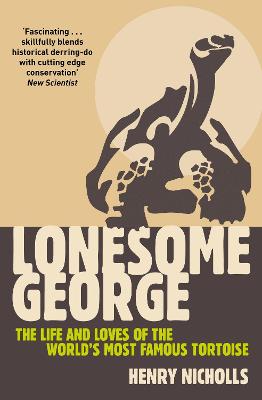Lonesome George is on the stamps of the Galapagos Islands. He is a 5ft long, 200lb tortoise aged between 60 and 200. In 1971 he was discovered on the remote island of Pinta, from which tortoises had supposedly been exterminated by whalers and seal hunters in search of a square meal. He was carted off to his current home, the Charles Darwin Research Station on Santa Cruz island. He has been there ever since, on the off chance that scientific ingenuity will conjure up a way of reproducing him, and resurrecting his species. Meanwhile a million tourists and dozens of baffled scientists have looked on as George shows not a jot of interest in the female company provided.
Henry Nicholls details the efforts of conservationists to preserve the Galapagos ' unique biodiversity and illustrates how their experiences and discoveries are echoed the world over. He explores the controversies raging over which mates are most appropriate for George and the risks of releasing crossbreed offspring into the wild. His story draws together the islands' geology, evolution, history of human exploitation and imperrilled future. It features strong characters, from Charles Darwin, to cloning pioneer Ian Wilmut, to the beautiful Swiss graduate who spent four months trying to persuade George to have sex. Some 100,000 tourists visit the Galapagos Islands each year; all drop in on George.
- ISBN10 0330450115
- ISBN13 9780330450119
- Publish Date 4 May 2007 (first published 20 March 2006)
- Publish Status Out of Print
- Out of Print 9 May 2012
- Publish Country GB
- Publisher Macmillan Education UK
- Imprint Red Globe Press
- Format Paperback (B-Format (198x129 mm))
- Pages 256
- Language English
